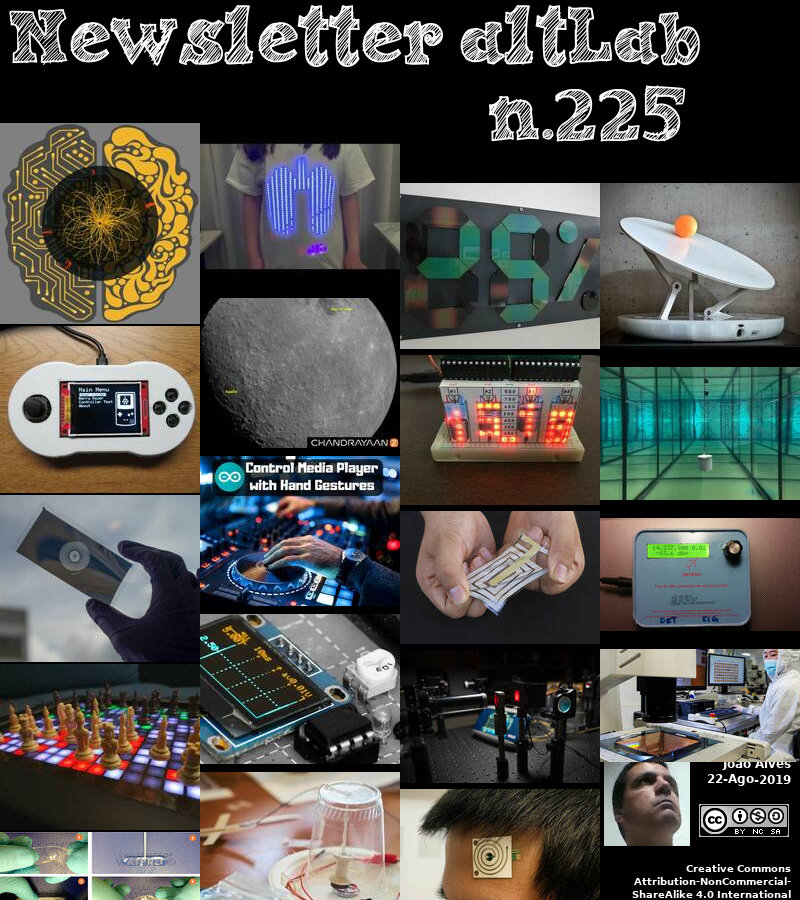2019-08-22 - Nº 225
Editorial
Esta é a Newsletter Nº 225 que se apresenta com o mesmo formato que as anteriores. Se gostar da Newsletter partilhe-a!
Todas as Newsletters encontram-se indexadas no link.
Esta Newsletter tem os seguintes tópicos:
Faz hoje anos que nascia, em 1647, Denis Papin. Este físico franco-inglês inventou a panela de pressão em 1679. Ele ajudou o físico holandês Christiaan Huygens com experiências de bombeamento de ar e foi para Londres em 1675 para trabalhar com o físico inglês Robert Boyle. Alguns anos depois, Papin inventou a sua panela de pressão, um recipiente fechado com uma tampa bem justa que confinava o vapor a uma pressão mais alta, elevando consideravelmente o ponto de ebulição da água. Uma válvula de segurança de sua própria invenção impedia explosões. Observando que o vapor fechado no seu fogão tendia a levantar a tampa, Papin concebeu o uso de vapor para accionar um pistão num cilindro, o projecto básico para os primeiros motores a vapor. Ele nunca construiu um motor próprio, mas sua ideia foi melhorada por outros e levou ao desenvolvimento da máquina a vapor, uma contribuição importante para a Revolução Industrial.
Faz também hoje anos que nascia, em 1771, Henry Maudslay. Este engenheiro britânico foi o inventor do torno de metal e de outros dispositivos. Maudslay foi aprendiz do serralheiro Joseph Bramah e logo se tornou seu capataz. Quando ele saiu para trabalhar por conta própria, o primeiro emprego de Maudslay foi a construção de maquinaria para a fábrica de polias navais de Sir Marc Isambard Brunel. Através de três décadas durante a Revolução Industrial, Maudslay inventou várias máquinas importantes, mas de todas o torno de metal é particularmente notável. Ele também inventou métodos para imprimir tecidos de chita e para dessalinizar a água do mar para caldeiras de navios. Ele aperfeiçoou uma máquina de medição com precisão de 0,0001 polegada e produziu para sua oficina padrões precisos.
Faz igualmente hoje anos que nascia, em 1867, Charles Francis Jenkins. Este norte-americano foi o inventor do altímetro, o motor de arranque do automóvel e de um copo em forma de cone, mas é conhecido especialmente como um pioneiro da televisão. Em maio de 1920, na reunião de Toronto da Society of Motion Picture Engineers, Jenkins apresentou seus "anéis prismáticos" como um dispositivo para substituir o obturador num projector de filmes. Esta invenção lançou as bases para sua primeira transmissão de radiodifusão. Ele alegou ter transmitido as primeiras imagens de silhuetas em movimento em 14 de Junho de 1923, mas sua primeira demonstração pública delas não ocorreu até Junho de 1925. Jenkins Laboratories construiu um transmissor de radiofrequência, W3XK, em Washington DC a estação de ondas curtas começou a transmitir radio-filmes em todo o leste dos EUA numa base regular em 2 de Julho de 1928.
Faz também hoje anos que nascia, em 1915, James Hillier. Este físico canadiano-americano foi o pesquisador pioneiro do microscópio electrónico. Com Albert Prebus, ele construiu o primeiro microscópio electrónico de sucesso na América do Norte (1939-40). As 41 patentes que ele detinha incluíam inovações em técnicas de difracção de electrões, secções ultra-finas e bacteriológicas. Para fazer a imagem de materiais como células sanguíneas ou bactérias sem destruí-los com o feixe de electrões, Hillier e outros desenvolveram métodos de preparação usando um filme coloidal para proteger as amostras. Ele trabalhou para a RCA desde 1940 por 37 anos. Ele continuou a melhorar o desenho e comercializou o microscópio electrónico para instituições de pesquisa em todo o mundo. Em 1958, tornou-se director dos laboratórios de pesquisa da empresa em Princeton. Na década de 1960, quando a RCA terminou sua fabricação de microscópios electrónicos, cerca de 2.000 tinham sido vendidos.
Por fim, faz hoje anos que nascia, em 1943, Masatoshi Shima. Este engenheiro electrotécnico japonês foi um dos desenhadores do primeiro microprocessador do mundo, o Intel 4004, produzindo o desenho inicial de três chips da Busicom em 1968, antes de trabalhar com Ted Hoff, Stanley Mazor e Federico Faggin da Intel no projecto final de CPU de um único chip. Mais tarde, ele foi trabalhar para a Intel em 1972. Lá, ele trabalhou com Faggin para desenvolver o CPU Intel 8080, lançado em 1974. Shima então desenvolveu vários chips Intel para periféricos, alguns usados no IBM PC, como o controlador de interrupção 8259, chip de porta paralela 8255, o chip temporizador 8253, o chip de DMA 8257 e o chip USART de comunicação serie 8251. Posteriormente ele foi para a Zilog, onde trabalhou com Faggin para desenvolver o Zilog Z80 (1976) e o Z8000 (1979).
Nesta semana que passou a empresa de inteligência artificial Cerebras apresentou o processador mais potente do mundo construído até hoje. Na conferencia Hot Chips realizada na universidade de Stanford, a empresa Cerebras apresentou uma maravilha da tecnologia moderna. Há tantas coisas que tornam a solução da Cerebras única que é difícil saber por onde começar. A Cerebras superou muitos desafios de desenho, fabricação e embalagem para desenvolver uma solução em escala de wafer chamada Wafer Scale Engine (WSE). Isto significa que o desenho usa todo o espaço utilizável da pastilha de silício como um único chip ou plataforma. A maioria dos chips é feita colocando 10 ou 100 unidades de um chip num wafer e depois cortando o wafer em fichas individuais. Usar um wafer inteiro como um único chip foi tentado em outras aplicações, mas foi abandonado por problemas de custo e rendimento. Um único wafer de 300 mm pode custar dezenas de milhares de dólares para produzir. No entanto, a menor partícula de poeira ou imperfeição na fabricação pode causar a falha de uma parte de um chip e, muitas vezes, a falha de todo o chip. Fabricar uma bolacha inteira sem um erro é impossível, mas a Cerebras encontrou uma maneira de contornar isso. O Cerebras WSE é feito de 84 blocos de processamento, semelhantes aos chips individuais, e cada bloco tem núcleos de processador, memória e E / S redundantes. Quando uma parte de um bloco falha, as funções extras são substituídas em seu lugar por meio de ferramentas de software, fazendo com que pareça um bloco totalmente funcional. Como resultado, a empresa pode teoricamente ter 100% de rendimento de todas as peças em um wafer e todas as wafers produzidas. No entanto, a fabricação é apenas uma parte da equação. Outra questão é o desafio de fornecer energia e arrefecimento a uma solução inteira em escala de bolacha. Com 400.000 núcleos de processador programáveis, 18 GB de memória e um tecido no chip capaz de 25 petabits, o WSE é composto por 1,2 biliões de transístores em 46.225 mm2 de silício (por contraste, é 56x maior que o maior GPU para IA - o NVIDIA GV100 - que é 815mm2). Além disso, o WSE gasta cerca de 15kW. O fabrico foi feito pela TSMC que usou o processo de 16nm.
Também esta semana que passou a nave espacial indiana Chandrayaan-2 tirou a sua primeira fotografia lunar depois de ter entrado com sucesso na sua órbita. A fotografia foi tirada de cerca de 2.650 quilómetros acima da superfície lunar na quarta-feira (21 de Agosto). A fotografia mostra parte do outro lado da lua, incluindo a cratera Apollo e a Mare Orientalis. Funcionários da Organização de Pesquisa Espacial Indiana (ISRO) disseram que a operação correu bem e que a nave espacial Chandrayaan-2 deve colocar sua sonda na superfície da lua no início de Setembro.
Na Newsletter desta semana apresentamos diversos projetos de maker. É também apresentada a revista Hackspace Magazine de Setembro.
 João Alves ([email protected])
João Alves ([email protected])
O conteúdo da Newsletter encontra-se sob a licença  Creative Commons Attribution-NonCommercial-ShareAlike 4.0 International License.
Creative Commons Attribution-NonCommercial-ShareAlike 4.0 International License.
Novidades da Semana
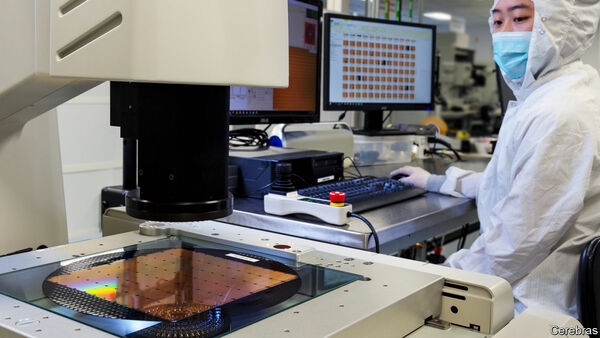
AI Startup Cerebras Develops The Most Powerful Processor In The World
"With a plethora of semiconductor start-ups, semiconductor companies, universities, government agencies, and even device and system OEMs working on chips for artificial intelligence (AI), it’s hard to stand out from the crowd. However, a start-up called Cerebras has managed to do so. Yesterday at the Hot Chips conference held at Stanford University, Cerebras introduced a unique solution for AI deep learning that is an engineering marvel. There are so many things that make the Cerebras solution unique that it is hard to know where to start. Cerebras has overcome many design, manufacturing, and packaging challenges to develop a wafer-scale solution called the Wafer Scale Engine (WSE). This means that the design uses the entire useable space of the silicon wafer as a single chip or platform." [...]
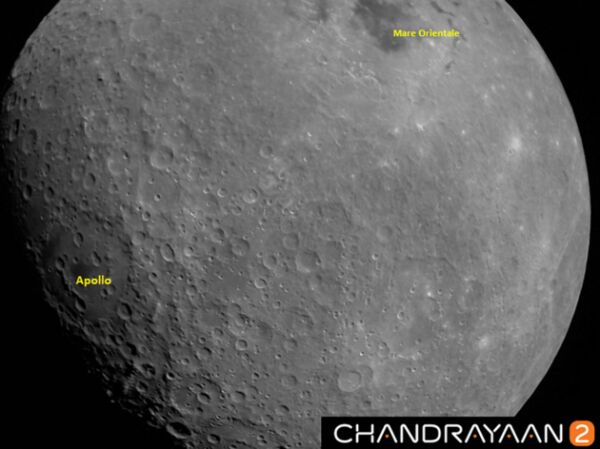
India's Chandrayaan-2 Spacecraft Snaps Its First Picture of the Moon
"India's Chandrayaan-2 mission is in orbit around the moon, and its view is spectacular. The spacecraft entered lunar orbit on Aug. 19 (Aug. 20 local time at mission control in India), about a month after its launch, on July 22. In order to make the journey more feasible with a smaller rocket, the spacecraft took a long road to the moon, with about seven weeks between launch and the scheduled touchdown of the mission's lander and orbiter. The Indian Space Research Organisation (ISRO), which runs the Chandrayaan-2 mission, has now released the spacecraft's first image of the moon taken from orbit. That image was snapped from about 1,650 miles (2,650 kilometers) above the lunar surface on Wednesday (Aug. 21). The photograph shows part of the far side of the moon, including Apollo crater and Mare Orientalis." [...]
Outras Notícias
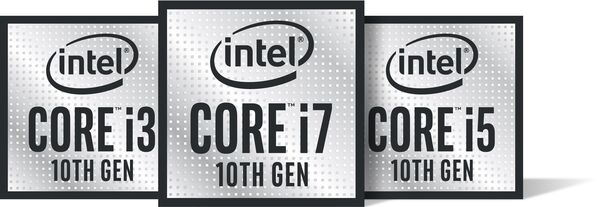
Intel Expands 10th Gen Intel Core Mobile Processor Family, Offering Double Digit Performance Gains
"Today, Intel introduced eight additional 10th Gen Intel® Core™ processors for modern laptop computing. The new mobile PC processors (formerly code-named “Comet Lake”) are tailor-made to deliver increased productivity and performance scaling for demanding, multithreaded workloads while still enabling thin-and-light laptop and 2 in 1 designs with uncompromising battery life1. These processors are performance powerhouses that bring double digit performance gains compared with the previous generation2. The lineup also includes Intel’s first 6-core processor in the U-series, faster CPU frequencies, faster memory interfaces and the industry redefining connectivity with Intel® Wi-Fi 6 (Gig+) and broader scaling of Thunderbolt™ 3. More than 90 additional designs based on the 10th Gen Intel Core processor family will hit the shelves for the holiday season. “Our 10th Gen Intel Core mobile processors provide customers with the industry-leading range of products that deliver the best balance of performance, features, power and design for their specific needs." [...]
Ciência e Tecnologia
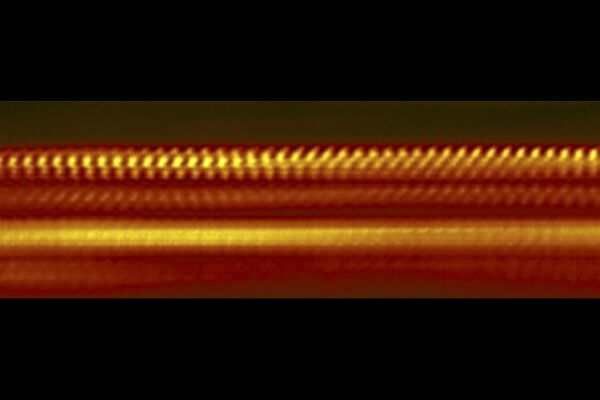
Stanford builds a heat shield just 10 atoms thick to protect electronic devices
"Atomically thin materials developed by Stanford researchers could create heat-shields for cell phones or laptops that would protect people and temperature-sensitive components and make future electronic gadgets even more compact. Excess heat given off by smartphones, laptops and other electronic devices can be annoying, but beyond that it contributes to malfunctions and, in extreme cases, can even cause lithium batteries to explode. To guard against such ills, engineers often insert glass, plastic or even layers of air as insulation to prevent heat-generating components like microprocessors from causing damage or discomforting users. Now, Stanford researchers have shown that a few layers of atomically thin materials, stacked like sheets of paper atop hot spots, can provide the same insulation as a sheet of glass 100 times thicker. In the near term, thinner heat shields will enable engineers to make electronic devices even more compact than those we have today, said Eric Pop, professor of electrical engineering and senior author of a paper published Aug. 16 in Science Advances. “We’re looking at the heat in electronic devices in an entirely new way,” Pop said." [...]
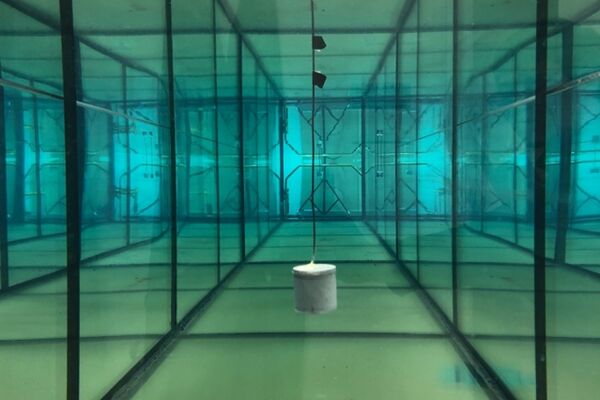
A battery-free sensor for underwater exploration
"Submerged system uses the vibration of “piezoelectric” materials to generate power and send and receive data. To investigate the vastly unexplored oceans covering most our planet, researchers aim to build a submerged network of interconnected sensors that send data to the surface — an underwater “internet of things.” But how to supply constant power to scores of sensors designed to stay for long durations in the ocean’s deep? MIT researchers have an answer: a battery-free underwater communication system that uses near-zero power to transmit sensor data. The system could be used to monitor sea temperatures to study climate change and track marine life over long periods — and even sample waters on distant planets. They are presenting the system at the SIGCOMM conference this week, in a paper that has won the conference’s “best paper” award. The system makes use of two key phenomena." [...]
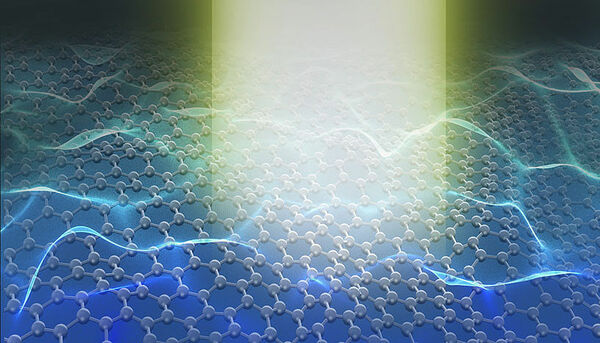
How do atoms vibrate in graphene nanostructures?
"Innovative new electron spectroscopy technique pushes the limits of Nanospectroscopy for materials design In order to understand advanced materials like graphene nanostructures and optimize them for devices in nano-, opto- and quantum-technology it is crucial to understand how phonons – the vibration of atoms in solids – influence the materials’ properties. Researchers from the University of Vienna, the Advanced Institute of Science and Technology in Japan, the company JEOL and La Sapienza University in Rome have developed a method capable to measure all phonons existing in a nanostructured material. This is a breakthrough in the analysis of nanoscale functional materials and devices. With this pilot experiment using graphene nanostructures these researchers have shown the uniqueness of their approach, which will be published in the latest issue of Nature. Important thermal, mechanical, optoelectronic and transport characteristics of materials are ruled by phonons: the propagating atomic vibrational waves. It is then inferable that the determination of such extended atomic vibrations is crucial for the optimization of nanoelectronic devices." [...]
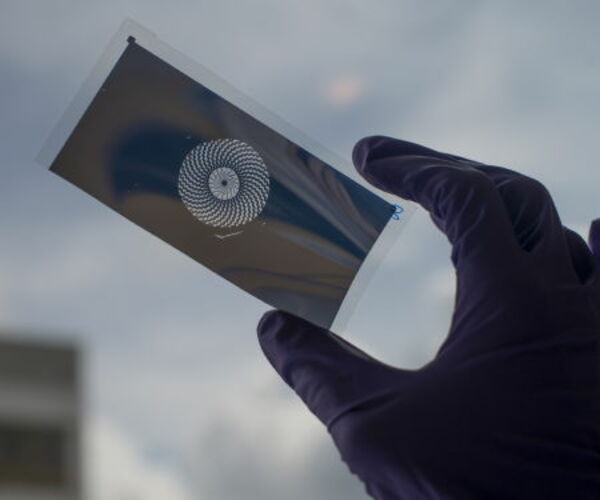
Greener, faster and cheaper way to make patterned metals for solar cells and electronics
"· Patterning metals for electronics and solar cells can be slow, expensive and involve toxic chemicals · Scientists from the Department of Chemistry at the University of Warwick have developed a way to make patterned films of silver and copper (the two most conductive metals) using cheap organofluorine compounds and without using toxic chemicals. · This method is more sustainable and potentially much cheaper because it uses an extremely thin printed layer of organofluorine to prevent metal deposition, so metal is only deposited where it is needed. · It can be used to make electrodes for flexible solar panels, next generation sensors and low-emissivity glass An innovative way to pattern metals has been discovered by scientists in the Department of Chemistry at the University of Warwick, which could make the next generation of solar panels more sustainable and cheaper. Silver and copper are the most widely used electrical conductors in modern electronics and solar cells. However, conventional methods of patterning these metals to make the desired pattern of conducting lines are based on selectively removing metal from a film by etching using harmful chemicals or printing from costly metal inks. Scientists from the Department of Chemistry at the University of Warwick, have developed a way of patterning these metals that is likely to prove much more sustainable and cheaper for large scale production, because there is no metal waste or use of toxic chemicals, and the fabrication method is compatible with continuous roll-to-roll processing." [...]
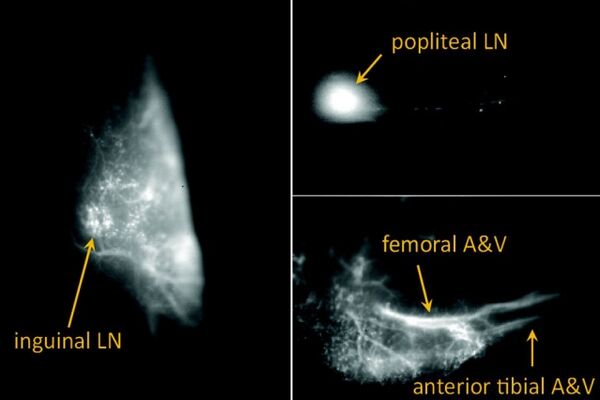
A single-photon source you can make at home
"Shining light through household bleach creates fluorescent quantum defects in carbon nanotubes for quantum computing and biomedical imaging. Quantum computing and quantum cryptography are expected to give much higher capabilities than their classical counterparts. For example, the computation power in a quantum system may grow at a double exponential rate instead of a classical linear rate due to the different nature of the basic unit, the qubit (quantum bit). Entangled particles enable the unbreakable codes for secure communications. The importance of these technologies motivated the U.S. government to legislate the National Quantum Initiative Act, which authorizes $1.2 billion over the following five years for developing quantum information science. Single photons can be an essential qubit source for these applications." [...]
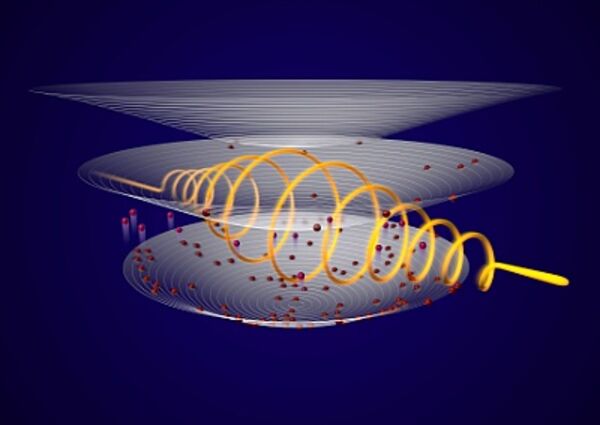
A laser for penetrating waves
"Research team develops a new principle to generate terahertz radiation The "Landau-level laser" is an exciting concept for an unusual radiation source. It has the potential to efficiently generate so-called terahertz waves, which can be used to penetrate materials as well as for future data transmission. So far, however, nearly all attempts to make such a laser reality have failed. An international team of researchers has now taken an important step in the right direction: In the journal Nature Photonics (DOI: 10.1038/s41566-019-0496-1), they describe a material that generates terahertz waves by simply applying an electric current. Physicists from the German research center Helmholtz-Zentrum Dresden-Rossendorf (HZDR) played a significant role in this project. Like light, terahertz waves are electromagnetic radiation, in a frequency range between microwaves and infrared radiation." [...]

Newfound Superconductor Material Could Be the ‘Silicon of Quantum Computers’
"Possible “topological superconductor” could overcome industry’s problem of quantum decoherence. A potentially useful material for building quantum computers has been unearthed at the National Institute of Standards and Technology (NIST), whose scientists have found a superconductor that could sidestep one of the primary obstacles standing in the way of effective quantum logic circuits. Newly discovered properties in the compound uranium ditelluride, or UTe2, show that it could prove highly resistant to one of the nemeses of quantum computer development — the difficulty with making such a computer’s memory storage switches, called qubits, function long enough to finish a computation before losing the delicate physical relationship that allows them to operate as a group. This relationship, called quantum coherence, is hard to maintain because of disturbances from the surrounding world. The compound’s unusual and strong resistance to magnetic fields makes it a rare bird among superconducting (SC) materials, which offer distinct advantages for qubit design, chiefly their resistance to the errors that can easily creep into quantum computation. UTe2’s exceptional behaviors could make it attractive to the nascent quantum computer industry, according to the research team’s Nick Butch." [...]
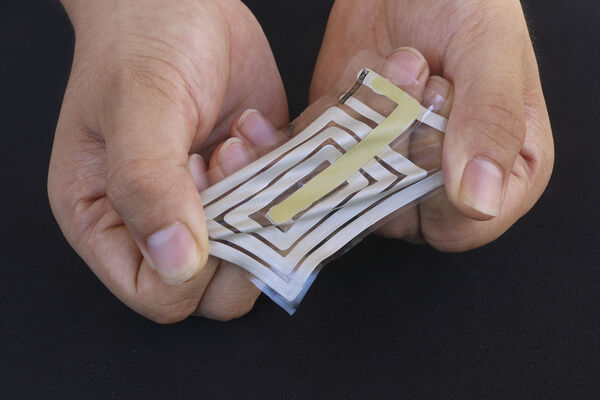
Stanford engineers have developed wireless sensors that stick to the skin to track our health
"Stanford engineers have developed experimental stickers that pick up physiological signals emanating from the skin, then wirelessly beam these health readings to a receiver clipped onto clothing. It’s all part of a system called BodyNet. We tend to take our skin’s protective function for granted, ignoring its other roles in signaling subtleties like a fluttering heart or a flush of embarrassment. Now, Stanford engineers have developed a way to detect physiological signals emanating from the skin with sensors that stick like band-aids and beam wireless readings to a receiver clipped onto clothing. To demonstrate this wearable technology, the researchers stuck sensors to the wrist and abdomen of one test subject to monitor the person’s pulse and respiration by detecting how their skin stretched and contracted with each heartbeat or breath. Likewise, stickers on the person’s elbows and knees tracked arm and leg motions by gauging the minute tightening or relaxation of the skin each time the corresponding muscle flexed." [...]
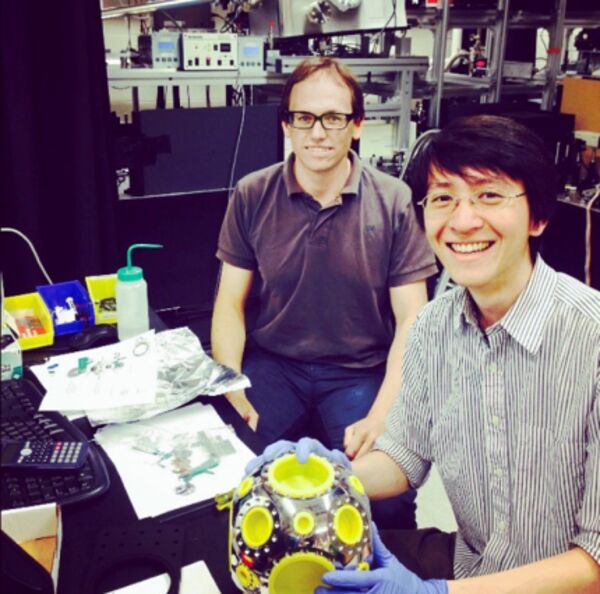
Watching electrons using extreme ultraviolet light
"MIT researchers have developed a new technique to reveal the uncharted dynamics of electrons in materials. A new technique developed by a team at MIT can map the complete electronic band structure of materials at high resolution. This capability is usually exclusive to large synchrotron facilities, but now it is available as a tabletop laser-based setup at MIT. This technique, which uses extreme ultraviolet (XUV) laser pulses to measure the dynamics of electrons via angle-resolved photoemission spectroscopy (ARPES), is called time-resolved XUV ARPES. Unlike the synchrotron-based setup, this laser-based setup further provides a time-resolved feature to watch the electrons inside a material on a very fast, femtosecond (quadrillionth of a second) timescale. Comparing this fast technique on a time and distance scale, while light can travel from the moon to the Earth in roughly one second, it can only travel as far as the thickness of a single sheet of regular copy paper in one femtosecond." [...]

Electronic merge: Expanded ion beams light new way for next-generation electronic devices, energy storage, smart homes
"A new type of lens is lighting the way for expanded uses of large ions and building blocks for new materials. The lens may also address one of the fundamental bottlenecks for generating bright ion beams. A Purdue University analytical chemistry group has developed a new device to help generate intense beams of large ions, which can be used for the fabrication of energy storage devices, optical coatings, purification of proteins and metabolites from complex biological samples, and nanoclusters from reaction mixtures. “We have developed a lens that merges and focuses up to 20 ion beams,” said Julia Laskin, the William F. and Patty J. Miller Professor of Analytical Chemistry in Purdue’s College of Science. “This opens the door for the creation of next-generation electronic, energy and other smart devices.” The multichannel electrostatic elliptical lens developed at Purdue has a precisely defined electrical field. It forces multiple ion beams to change their velocity directions and merges them into one intense beam of ions with well-defined composition and kinetic energy." [...]
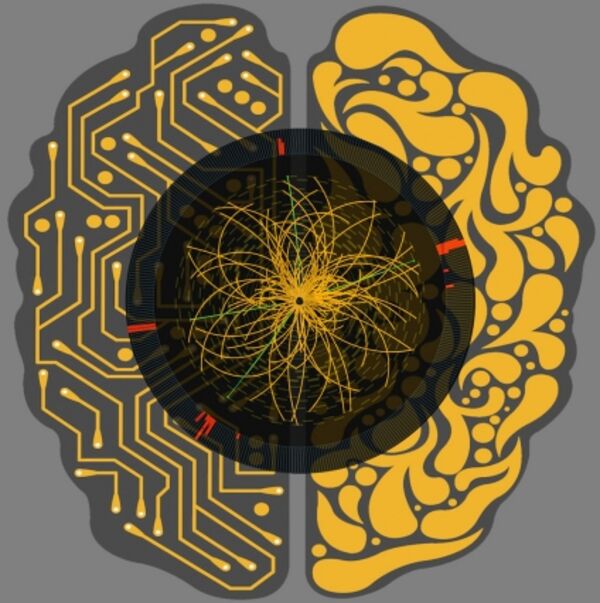
Boosting computing power for the future of particle physics
"Prototype machine-learning technology co-developed by MIT scientists speeds processing by up to 175 times over traditional methods. A new machine learning technology tested by an international team of scientists including MIT Assistant Professor Philip Harris and postdoc Dylan Rankin, both of the Laboratory for Nuclear Science, can spot specific particle signatures among an ocean of Large Hadron Collider (LHC) data in the blink of an eye. Sophisticated and swift, the new system provides a glimpse into the game-changing role machine learning will play in future discoveries in particle physics as data sets get bigger and more complex. The LHC creates some 40 million collisions every second. With such vast amounts of data to sift through, it takes powerful computers to identify those collisions that may be of interests to scientists, whether, perhaps, a hint of dark matter or a Higgs particle. Now, scientists at Fermilab, CERN, MIT, the University of Washington, and elsewhere have tested a machine-learning system that speeds processing by 30 to 175 times compared to existing methods." [...]

Researchers Develop Materials That Can Revolutionize How Light is Harnessed for Solar Energy
"New Design Rule for Generating Excitons Will Help Advance Next-Generation Devices Researchers at Columbia University have developed a way to harness more power from singlet fission to increase the efficiency of solar cells, providing a tool to help push forward the development of next-generation devices. In a study published this week in Nature Chemistry, the team details the design of organic molecules that are capable of generating two excitons per photon of light, a process called singlet fission. The excitons are produced rapidly and can live for much longer than those generated from their inorganic counterparts, which leads to an amplification of electricity generated per photon that is absorbed by a solar cell. “We have developed a new design rule for singlet fission materials,” said Luis Campos, an associate professor of chemistry and one of three principal investigators on the study. “This has led us to develop the most efficient and technologically useful intramolecular singlet fission materials to date. These improvements will open the door for more efficient solar cells.” All modern solar panels operate by the same process – one photon of light generates one exciton, Campos explained." [...]
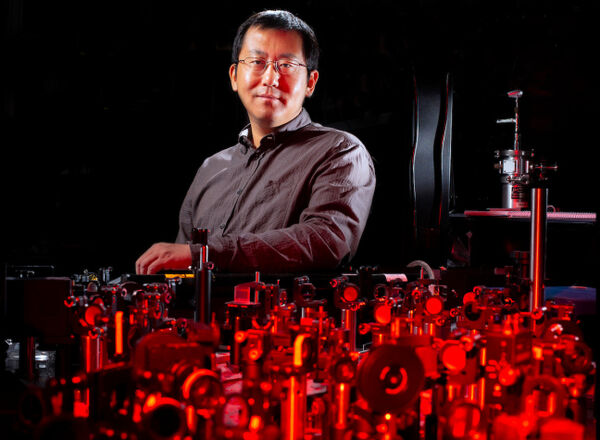
Physicists use light flashes to discover, control new quantum states of matter
"Jigang Wang can break his research goals into just a few words: “To discover and control quantum states of matter.” But, it takes paragraphs, analogies, illustrations, internet searches and a willingness to decipher talk about “non-equilibrium quantum phase discovery via non-thermal ultrafast quench near quantum critical points” to get a handle on those eight words. Even though it’s a head-scratcher, Wang’s work could be a big deal to all of us. Harnessing quantum physics – the particles and energy down at atomic scales – could lead to better computing, sensing, communicating and data storing technologies. But first researchers such as Wang – a professor of physics and astronomy at Iowa State University and a physicist at the U.S. Department of Energy’s Ames Laboratory – need to provide more answers about the quantum world. In Wang’s case, many of those answers are coming from quantum terahertz spectroscopy that can visualize and steer electrons. A three-year, $465,000 grant from the U.S. Army Research Office has supported the spectroscopy studies by Wang and his research group." [...]
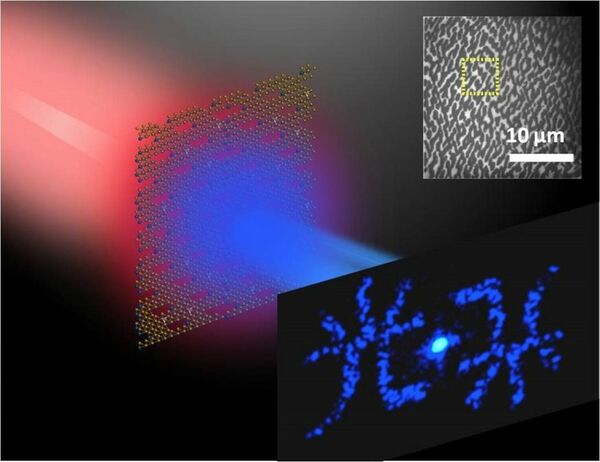
Researchers realize world’s thinnest optical hologram with 2-D material monolayer
"Missouri S&T researchers are demonstrating a new concept to reconstruct holographic images by using a single two-dimensional material monolayer with the thickness of less than one nanometer. Their work could lead to the creation of smart watches with holographic displays, printed security cryptograms on bank notes and credit cards, and new possibilities for data storage. The researchers describe their atomically thin nonlinear optical holograms in Nano Letters, one of the top journals in nanotechnology research, and prototype their device by reconstructing several kinds of holographic images with tungsten disulfide monolayers of the thickness of around 0.7 nanometer. A nanometer is one billionth of a meter, and a tungsten disulfide monolayer only contains one layer of tungsten atoms sandwiched between two layers of sulfur atoms. The approach is described in the Nano Letters paper “Atomically thin nonlinear transition metal dichalcogenide holograms,” which was published online Friday, Aug. 16. It involves the use of only a single nanopatterned tungsten disulfide monolayer that is able to control the wavefront of light, where the designed hologram patterns are punctured by a nanofabrication process known as focused ion beam milling." [...]
3D printing of silicone components
"ETH spin-off Spectroplast has developed a method to make silicone products using a 3D printer. The young company now plans to bring to market customised medical products such as hearing aids, breast prosthesis for breast cancer patients and eventually even artificial heart valves. Their ultimate goal is to save lives: the founders of the ETH spin-off Spectroplast, Manuel Schaffner and Petar Stefanov, have developed a novel 3D printing process capable of making biocompatible silicone parts. “In the long term we hope to use the technology to offer medical implants,” says Schaffner, the young company’s CEO. “And not in standard sizes, as is the case with conventional off-the-shelf products, but customised to fit the individual patient perfectly.” Until now, Additive Manufacturing has traditionally produced objects made of hard materials such as metal, ceramic, or plastic. On the other hand, soft elastic silicone is still being used exclusively with injection moulding, where different elements of the composite material are fused together at extremely high temperatures of around 300 degrees." [...]
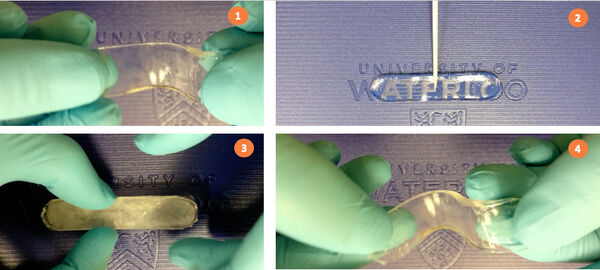
State-shifter: 'Smart' material can switch from soft to hard and back again
"A new material created at the University of Waterloo can switch back and forth between a hard solid or a soft gel at the same temperature, a breakthrough that offers an innovative solution to a long-standing challenge with synthetic materials by giving it both strength and shape adaptability. The two overlapping states of sal-gel, as researchers call it, pave the way for its use as a smart material in a range of technologies including soft robotics, adhesion and adhesives, and aeronautics. “It should be particularly effective for applications that require a gentle touch, but a firm grip,” said Aleksander Cholewinski, a PhD student who was co-leader of the research. “It is a two-in-one solid that meets both of those needs.” Sal-gel was engineered by combining supercooled melted salt with polymers to produce a transparent, stable gel. When the gel is touched with a crystal of the salt, it triggers an effect that turns it into a hard, opaque solid. The solid is essentially frozen, but still at room temperature." [...]
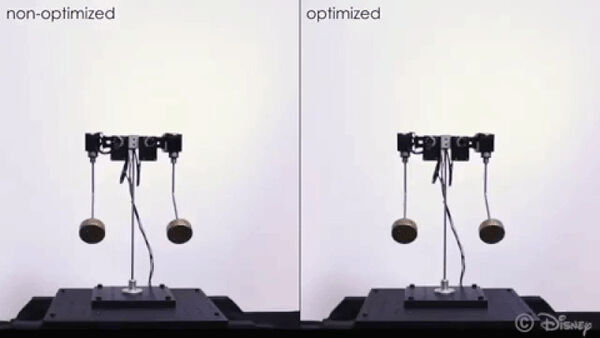
Vibration-Minimizing Motion Retargeting for Robotic Characters
"Creating animations for robotic characters is very challenging due to the constraints imposed by their physical nature. In particular, the combination of fast motions and unavoidable structural deformations leads to mechanical oscillations that negatively affect their performances. Our goal is to automatically transfer motions created using traditional animation software to robotic characters while avoiding such artifacts. To this end, we develop an optimization-based, dynamics-aware motion retargeting system that adjusts an input motion such that visually salient low-frequency, large amplitude vibrations are suppressed. The technical core of our animation system consists of a differentiable dynamics simulator that provides constraint-based two-way coupling between rigid and flexible components. We demonstrate the efficacy of our method through experiments performed on a total of five robotic characters including a child-sized animatronic figure that features highly dynamic drumming and boxing motions." [...]
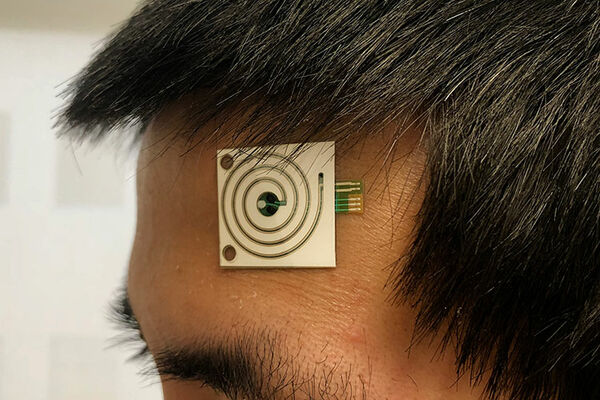
Wearable sensors detect what’s in your sweat
"Needle pricks not your thing? A team of scientists at the University of California, Berkeley, is developing wearable skin sensors that can detect what’s in your sweat. They hope that one day, monitoring perspiration could bypass the need for more invasive procedures like blood draws, and provide real-time updates on health problems such as dehydration or fatigue. In a paper appearing today (Friday, August 16) in Science Advances, the team describes a new sensor design that can be rapidly manufactured using a “roll-to-roll” processing technique that essentially prints the sensors onto a sheet of plastic like words on a newspaper. They used the sensors to monitor the sweat rate, and the electrolytes and metabolites in sweat, from volunteers who were exercising, and others who were experiencing chemically induced perspiration. “The goal of the project is not just to make the sensors but start to do many subject studies and see what sweat tells us — I always say ‘decoding’ sweat composition,” said Ali Javey, a professor of electrical engineering and computer science at UC Berkeley and senior author on the paper." [...]
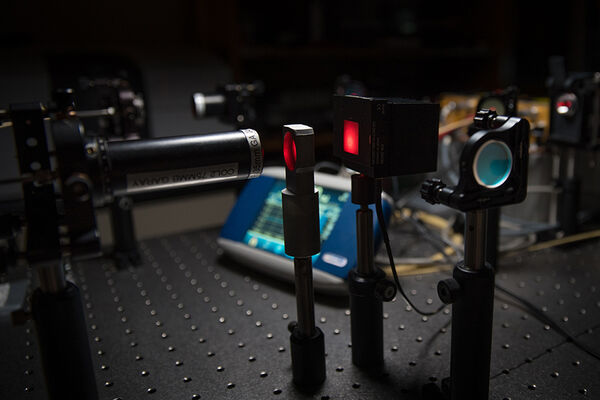
Lasers Enable Engineers to Weld Ceramics, No Furnace Required
"Smartphones that don’t scratch or shatter. Metal-free pacemakers. Electronics for space and other harsh environments. These could all be made possible thanks to a new ceramic welding technology developed by a team of engineers led by the University of California San Diego. The process, published in the Aug. 23 issue of Science, uses an ultrafast pulsed laser to melt ceramic materials along the interface and fuse them together. It works in ambient conditions and uses less than 50 watts of laser power, making it more practical than current ceramic welding methods that require heating the parts in a furnace." [...]
Documentação
A documentação é parte essencial do processo de aprendizagem e a Internet além de artigos interessantes de explorar também tem alguma documentação em formato PDF interessante de ler. Todos os links aqui apresentados são para conteúdo disponibilizado livremente pelo editor do livro.
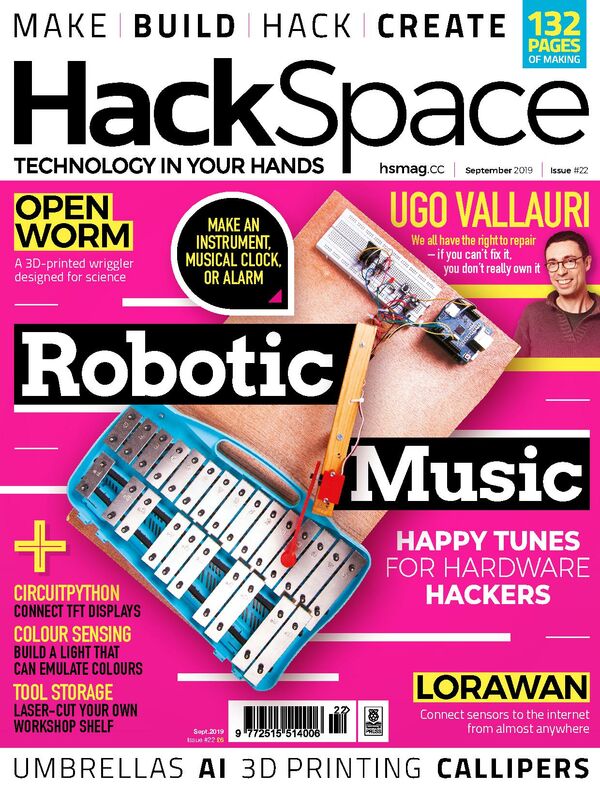
HackSpace magazine #22
"Why spend years learning to play a musical instrument when you could program a robot to do it for you? This month, we show you how to build a glockenspiel-playing robot. Build a colour sensing light Sharpen your tools Master digital callipers Control screens with CircuitPython" [...]
Projetos Maker
Diversos Projetos interessantes.
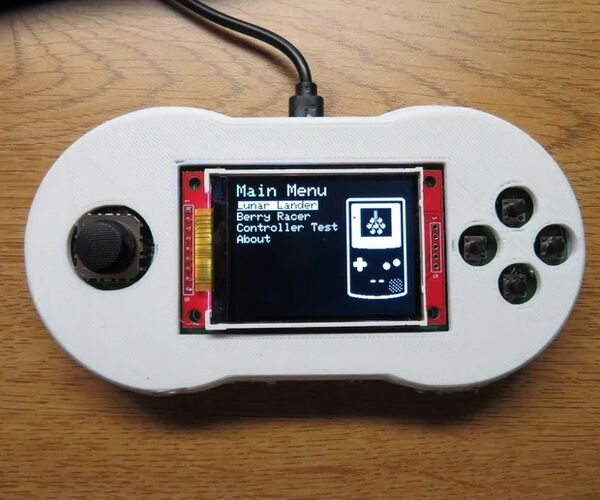
Berry Racer - a Game Programmed in Arduino and Played on a Custom PCB
"Berry Racer is a game that I came up with and programmed using Arduino's Software. The game is run on a Teensy microcontroller which is connected through a custom PCB (Printed Circuit Board) to a Screen, a Joystick, four buttons, and a piezo speaker. The board can be powered through the micro USB port on the Teensy or with a battery that can be plugged into the back of the PCB, there is also a switch to turn the circuit off when running on battery power. This Device and Program was designed and built by me with the help of Zane Cochran who was the instructor of the CRT 420 - Special Topics Course at Berry College for the Creative Technologies major. This instructable will go into detail about how to build a GamePad like this one, however, I hope it is also helpful in case you want to build something slightly different. The video that is linked to this intro slide covers the entire build process as well as some of the programming steps that I took, however it does not go into a lot of details about programming." [...]
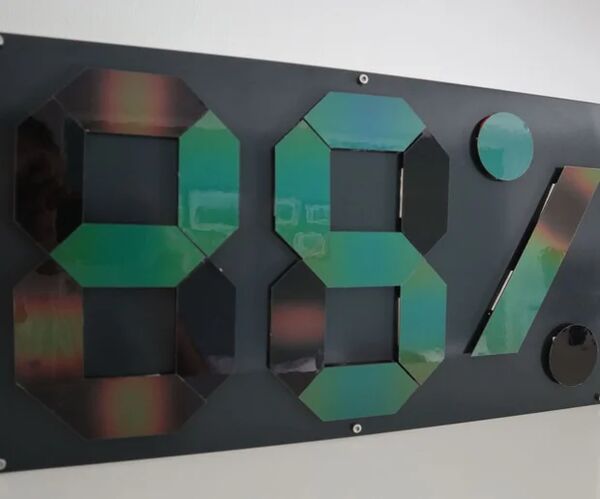
Thermochromic Temperature & Humidity Display
"I have been working on this project for quite some time. The original idea came to me after building a TEC controller demonstrator at work for a trade fair. To show the TECs heating and cooling capabilities we were using thermochromic paint that changes from black to transparent. In this project I have taken the idea further and build a two digit 7-segment display using copper plates that are covered with thermochromic sheets based on liquid crystals. Behind every copper plate sits a TEC element that controls the temperature and thereby changes the color of the liquid crystal sheet. The numbers will show the temperature and humidity from a DHT22 sensor." [...]
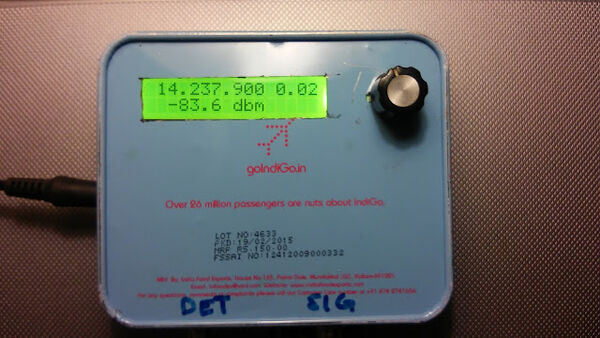
Sweeperino
"The Sweeperino a very useful Arduino based test instrument. It is the following: A very stable, low noise signal generator from 4 MHz to 160 MHz without any spurs A high precision power meter with 90 db with 0.2db resolution A sweeper that can be your antenna analyzer, plot your crystal or band pass filter through the PC It fits in your jacket It can be assembled in an evening. Costs about $50 in new parts. Circuit Description The circuit consists of three very simple blocks An Arduino. I used Arduino Nano board though any Arduino board will do. If you don't know what an Arduino is, look around the Internet." [...]
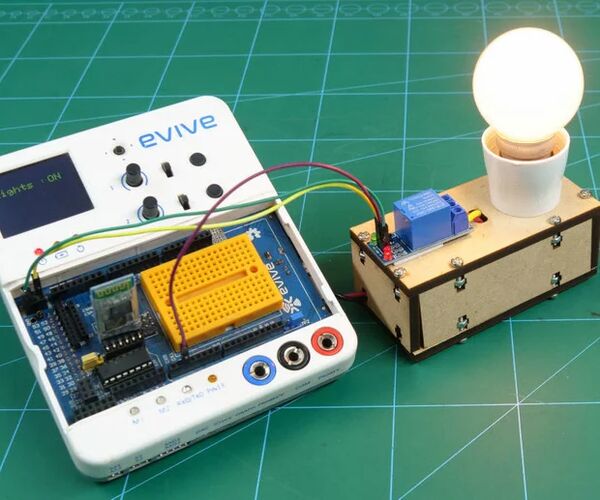
Make Voice Controlled Light Bulb Using Relay and Evive
"Weve controlled lights with touch, weve controlled them with a Smartphone. How about controlling them with voice? Presenting to you the voice-activated light bulb! This project is a smaller version of the bigger home lighting automation projects that is ideal for beginners who wish to make IoT projects and educators who wish to introduce IoT and home automation to their students. To make this project, were going to use the evive IoT kit and code it using PictoBlox - a graphical programming software based on Scratch with advanced capabilities. You can download it from HERE." [...]
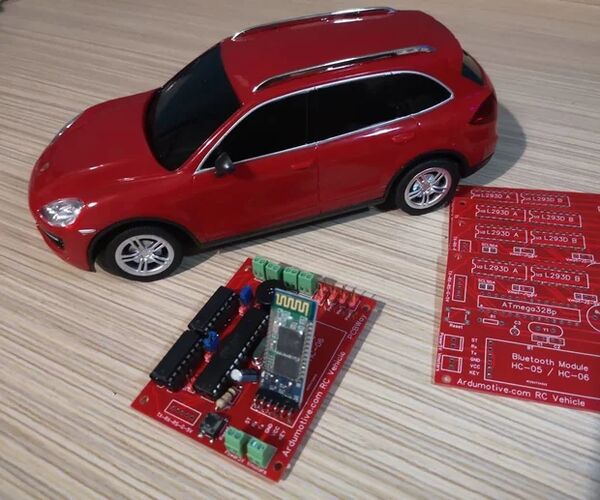
Arduino Bluetooth RC Car
"This is our new Bluetooth RC car - based on our favorite Arduino UNO! In this project as you can see we used a custom-made PCB board and the ATmega328p micro controller. The board is specially design for this project and for small RC models. You can simple control it from your Android phone or tablet via Bluetooth. From the Android application you can also turn on/off the front and rear lights and play a horn sound! For our RC model we used only 3x1.5V AA batteries!" [...]
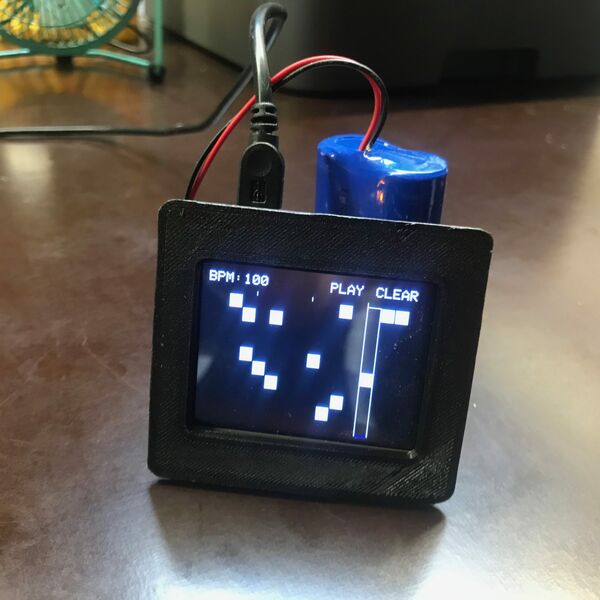
Arduino Sequencer
"For some decades I’m fascinated by mechanisms that create rhythms. My first sequencer was written in Flash 4. At the art academy they introduced me to Maxmsp and created both Lightbox Sequencers. Now I’m getting familiair using Arduino’s. Big artworks or installations usually start small so why not write a sequencer using an Arduino! Free to download, with a list of all ingredients, ready to cook this fine recipe for guaranteed and endless hours of rhythmic pleasures." [...]
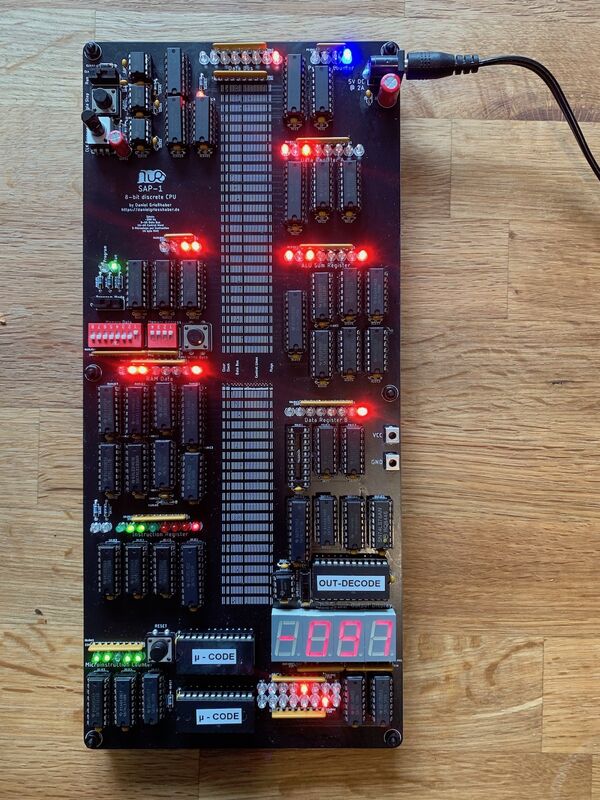
SAP-1 Processor Architecture
"A simple 8-bit micro-processor using mostly discrete logic chips. This project is mostly based on the 8-bit Breadboard computer by Ben Eater Banner Specs ~400 Hz Clock 8-bit Data Bus 16-bit Control Word 5 Microsteps per Instruction 16 byte RAM Source (I want to build my own) Check the projects Github for all files neccecary. Submodules Clock with adjustable frequency and single-step button 2 8-bit Data Registers (A & B) ALU implementing sum and difference between Registers A & B, carry and zero flag Flag Register to save the ALU flags between instructions 4-bit Instruction Counter with load (jump) Output module to display a byte as positive decimal or 2s-complement with data latch Random Access Memory with 16 Bytes for instructions and data 4-bit Memory Address Register to address the 16 bytes of RAM 8-bit Instruction Register with the upper nibble representing the opcode, the lower nibble can be used for instruction parameters Instruction Decoder to run the microcode of the 16 different instructions with 5 microinstuctions each. Uses a 16-bit control word to control the other modules" [...]
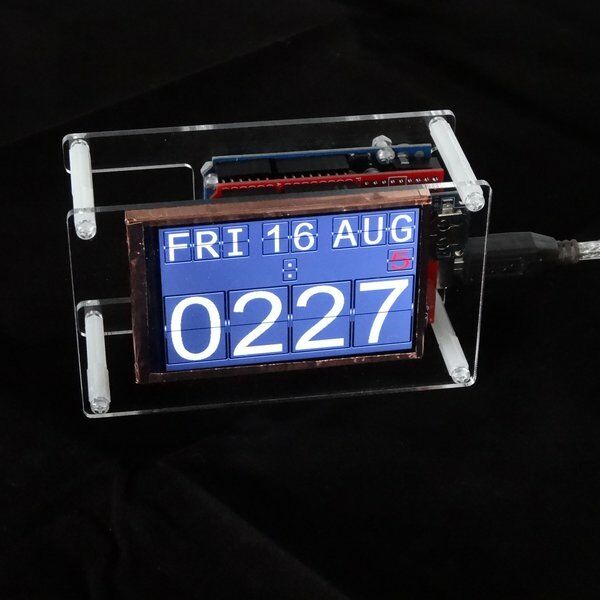
FlipClock
"An Arduino-based graphical flip clock. Bonus faces because theres room. Really minimal enclosure. I'd had the idea for a graphical flip clock for a while (run-length encode half-digit foreground/background data, draw every n-th row to get the look of a tipped split flap) but it was on the back burner. Then I found a pretty nice 3.5 320x240 colour LCD (ILI948x driver) on a local market website. After implementing the clock I found I had room in the sketch and was inspired by the colourfulness of the LCD, so slapped in some other faces based on code from earlier projects; a cubist clock, a triangle clock and a pong clock." [...]
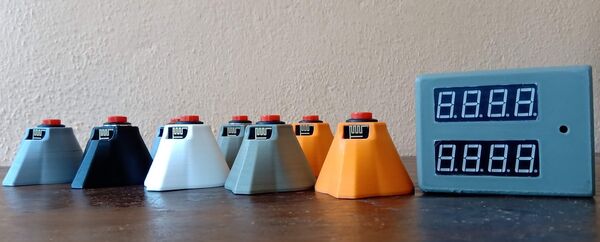
Wireless Quiz / Game Buzzers
"This is an Arduino based remote buzzer system. Larger display can be a PC connected camera focused on the base station, then to a projector. Or using a phone camera to PC/other device via the Internet. We're due to build software to directly display on PC, keep track of scoring, timer, etc. We are making available (open sourcing) most of the build data such that anyone needing such a system can make it or get it made. And get existing systems repaired / modified easily." [...]

Gesture Based Media Player Controller Using Arduino
"Control your media player using simple hand gestures. No complex circuit. Works on all computers. This gesture based media controller or Arduino Volume Controller can be connected to any computer running any OS. You can connect it to PCs USB port and it will act as a HID or a human interface device. In this video, I will explain this sensor, HID using Arduino and the Code." [...]
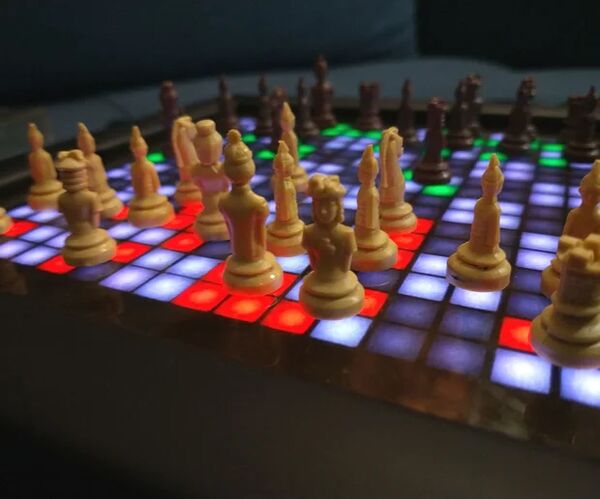
Playing Chess Against Arduino
"This project has been developed with the Games contest in my mind, I hope youll like it and give your vote :) The idea of this project is quite simple. I want to simulate as many board games as possible using a simple electronic assembly. Of course, every game with its own software, which must be loaded into the simulators microcontroller. Thus, I could simulate games like: Ludo, Ladders and Snakes, Morris, Checkers, a bunch of different dice based games... Nowadays, unfortunately, children have lost interest in board games, what attracts them are the computer games with the most realistic graphics and audio effects, that require a large storage space and dynamic memory. Who knows, maybe working with them in carrying out this project, we will be able to distract them from the computer screens and point them to the basic games. Of course, I am aware that there are many other game projects on Arduino, but most of them are based on the use of an LCD or OLED display, I have seen very few projects similar to mine that only use RGB LEDs assembly to simulate games." [...]
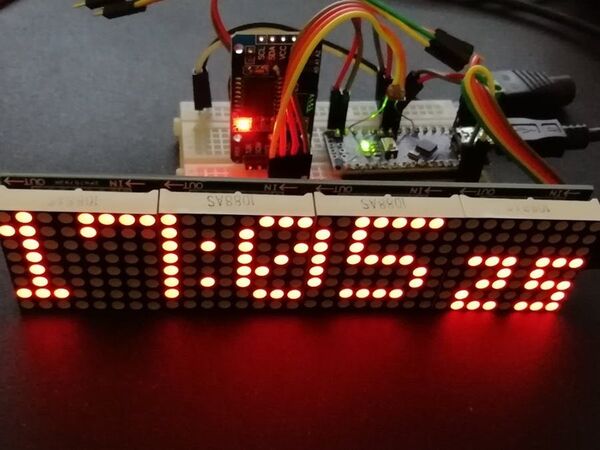
Arduino Nano Clock with 4x64 LED Matrix
"Small size code and simple hardware. Reading a clock display in a room at several meters requires such a LED matrix display. Having bought at a good price a 4 cell display, I looked on Hackster for available projects: there are several ones, valid for Arduino Nano. If you want to see hour, minute and seconds simultaneously: only a few projects work, because you need smaller digits than the widely available ones with 5x7 pixels per digit. An option is to use the MD_Parola library, but the code size is too large for a simple clock. The other tested option was the Max72xxPanel library, but this is too old and calls other libraries." [...]
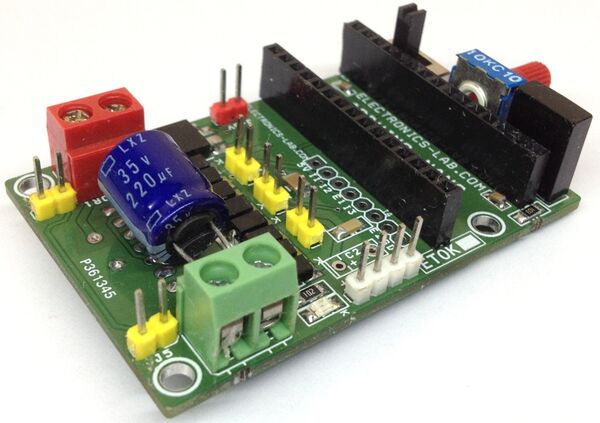
InfraRed Robot Controller Shield For Arduino Nano
"This compact Infrared robot controller is based on Arduino Nano and L298 H-Bridge. The Nano shield can be used in various DC Motor driver applications using infra-red remote control or speed controller using trimmer potentiometer and direction control with help of slide switch. The board can drive two small size DC-Motors with current rating up to 1A each. Board also has jumpers to drive single DC Motor up to 2A. Additional 10K trimmer potentiometer and slide switch provided for DC Motor speed and direction control. The L298 IC mounted under the PCB so board can be mounted on heat sink directly in horizontal position." [...]
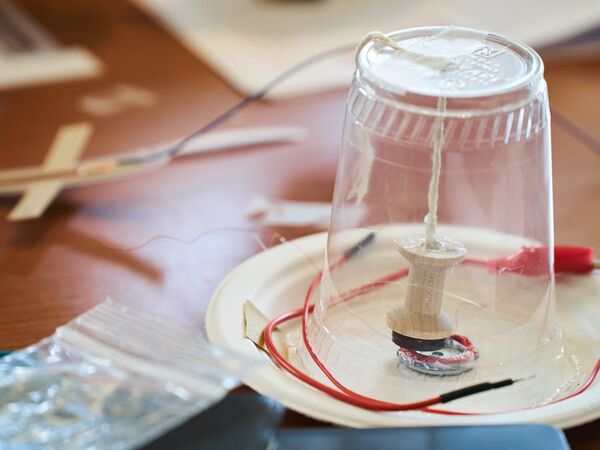
Electromagnetic Sensor
_"A simple electromagnetic sensor to measure current induced by a moving magnetic field! Move a magnet over a wire and you'll create an electric current! * A very small electric current, but all you need to do to increase the amount of current is add more wire**! One of the simplest ways to do this is to create a coil of wire. This is the basic phenomenon that enables motors, speakers, and microphones to work! We can also use it as a sensor to measure changes in movement, which is a handy way to build a do-it-yourself seismograph!"_ [...]
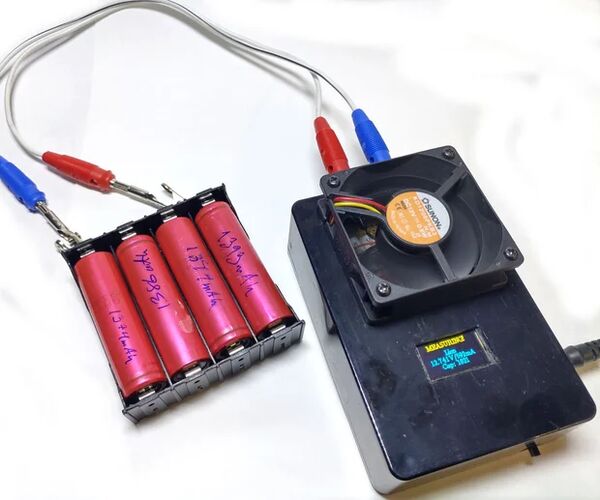
Yet Another Battery Capacity Tester
"Why one more capacity tester I read through a lot of different tester build instructions but none of them seem to fit my needs. I wanted to be able to test also more than just singe NiCd/NiMH or Lion cells. I wanted to be able to test a power tool battery without taking it to part first. So, I decided to have a closer look on the matter and design one of my own. One thing leads to another and I finally decided to write an instructable myself. I also decided not to go in all the details of how to actually build the tester because everyone can decide on certain choices like what size resistor to use or if a PCB is needed or is Veroboard enough and there is also a ton on instructables how to install eagle or how to make a PCB." [...]
EqualAir: Wearable NeoPixel Display Triggered by Air Pollution Sensor
"The aim of the project is to make a wearable t-shirt that displays an evocative graphic when air pollution is above a set threshold. The graphic is inspired by the classic game "brick breakers", in that the car is like a paddle which spits out the exhaust (which are like balls) that "hit" pieces of the lung and degrade them. When air pollution is above a threshold (e.g. when walking by cars), the otherwise innocuous white t-shirts begins playing the display. This project was built by Jordan, Mary, Nick, and Odessa for a class called The Art and Science of Making. " [...]
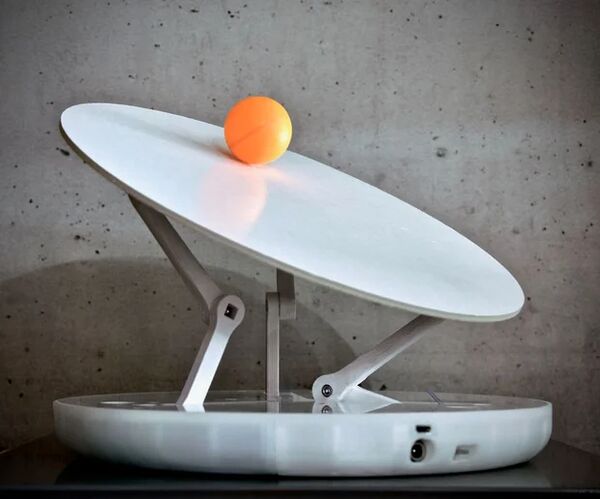
Ball Balancing PID System
"This system holds a ball in balance on a plate. A webcam films the system and a python program analyzes the images to find the position of the ball. The python program calculates the tilting of the tray to prevent the ball from falling. A proportional-integral-derivative (PID) regulator is used to compensate the movements of the ball. The position and speed of the ball are measured by the camera and these measurements are used by the PID regulator in the python program. " [...]
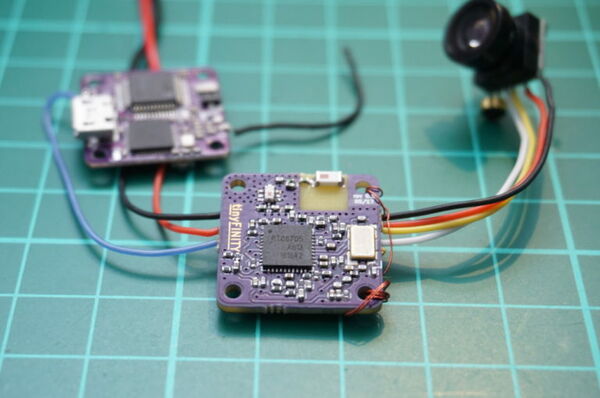
tinyOSD & tinyFINITY – a tiny opensource video tx with full graphic OSD
"Merry belayed Christmas and a happy new year everyone. I know, I am running a tiny bit late. My original plan was to release the tinyOSD and tinyFINITY sources ready for Christmas but then the usual things got into the way and I had to postpone this post. But here it is: I am releasing my sources of my custom full graphic OSD with insane update rates to the world. But that’s not all! I am also releasing a custom 16x16mm VTX design that includes all the hardware to run the tinyOSD firmware on it." [...]
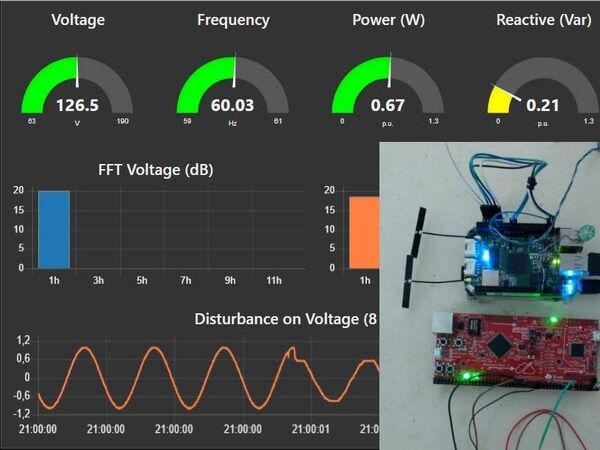
Smart Electrical Power Analyzer
"The Smart Analyzer is an extended version of Oscillogram for Utility Grid with advanced resources: fft analysis on voltage and current. This project is an extended version of Oscillogram for Utility Grid. Beyond monitor the voltage amplitude and frequency on utility grid, the smart analyser run fft analysis on voltage and the load current, measure the power active and reactive and datas are presented to the user in real time. The datas are received from TM4C1294 LaunchPad trough serial uart interface in BeagleBone. In this, the datas are stored in.csv file by a program Energy_QoS (in C). The files created are: dataloger_0.csv (store 8 voltage cycles when a disturbance occurs), dataloger_1.csv (store the frequency, magnitude and powers each 5 seconds) and dataloger_2.csv (store the odd harmonics of voltage and current each 5 seconds)." [...]
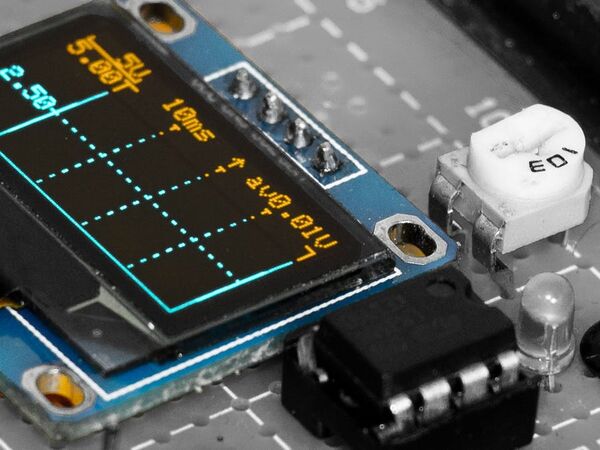
How to Make a Mini Oscilloscope at Home Using Arduino Nano
"Make your own mini oscilloscope at home. It’s simple and easy to do! Components needed Arduino Nano SSD1306 OLED display 1N4148 Microswitch 104 capacitor Resistors: 100Ω, 12k, 120k, 510k What is oscilloscope? An ‘oscilloscope’, previously called an ‘oscillograph’, and informally known as a scope or o-scope,CRO (for cathode-ray oscilloscope), or DSO (for the more modern digital storage oscilloscope), is a type of electronic test instrument that graphically displays varying signal [voltages], usually as a two-dimensional plot of one or more signals as a function of time. Other signals (such as sound or vibration) can be converted to voltages and displayed. Oscilloscopes display the change of an electrical signal over time, with voltage and time as the Y- and X-axes, respectively, on a calibrated scale." [...]
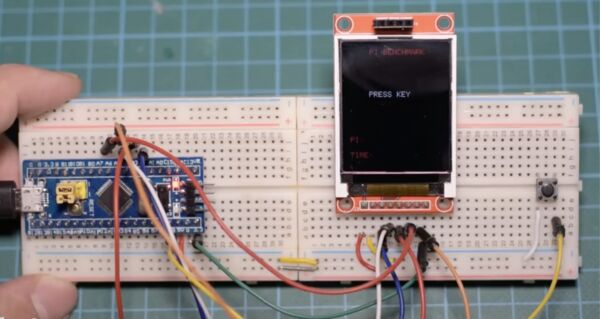
Programming STM32 Based Boards with the Arduino IDE
"Since it’s inception the Arduino IDE has demonstrated the desire to support all kind of platforms, from Arduino clones and variations of different manufacturers to third party boards like the ESP32 and ESp8266. As more people get familiar with the IDE, they are beginning to support more boards that are not based on ATMEL chips and for today’s tutorial we will look on one of such boards. We will examine how to program the STM32 based, STM32F103C8T6 development board with the Arduino IDE. The STM32 board to be used for this tutorial is none other than the STM32F103C8T6 chip based STM32F1 development board commonly referred to as “Blue Pill” in line with the blue color of its PCB. Blue Pill is powered by the powerful 32-bit STM32F103C8T6 ARM processor, clocked at 72MHz. The board operates on 3.3v logic levels but its GPIO pins have been tested to be 5v tolerant." [...]
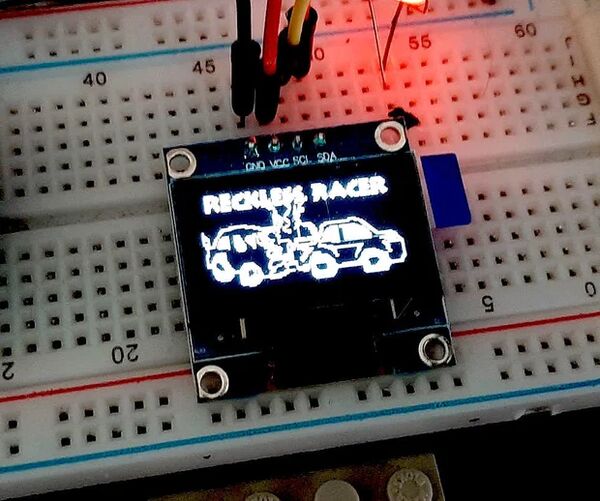
Reckless Racer Arduino OLED Game, AdafruitGFX and Bitmaps Basics
"In this tutorial we will be looking at how to use bitmaps using Adafruit_GFX.c library as sort of sprites in a game. The simplest game we could think of is a side scrolling lane changing car game, in the end our beta tester and assistant coder decided on "Reckless Racer" as a name, as its pretty reckless to drive the wrong way down the motorway!!. The Design of our circuit is in the pictures included above and is detailed in our last project/tutorial here Snake Instructables which describes how the circuit works. we will require Adafruit_GFX Paint.net Arduino IDE windowslinux and please take a look at the Snake tutorial for the rest of the equipment. Supplies: Snake Game" [...]
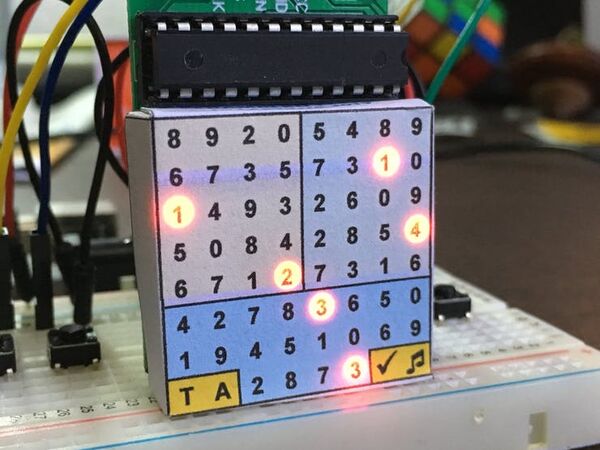
Scrambled Digits Clock with Alarm
"This is a clock with its digits out of order. Within the apparent chaos is a beautiful order! Very easy to use including an alarm clock! This is a clock with its digits out of order. Within the apparent chaos is a beautiful order! Very simple use and intuitive reading, including an adjustable alarm for a buzzer or just a visual alert." [...]
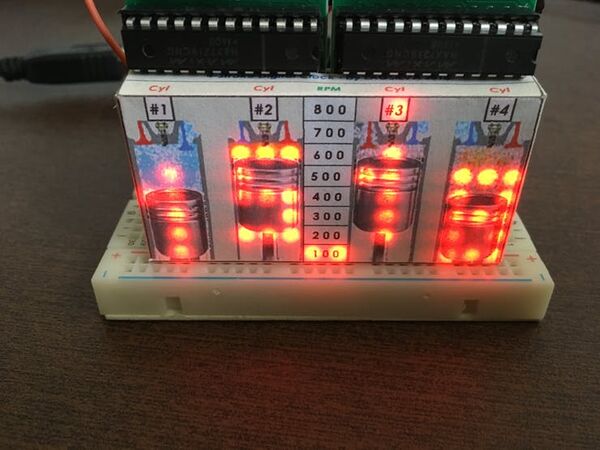
4-Stroke Digital Clock With Arduino
"This digital clock driven by Arduino is a fun emulator of 4-stroke engine where the digits of hours & minutes represent the pistons moving. The "4-Stroke Digital Clock" driven by Arduino is a fun emulator of an internal combustion engine in a digital clock. Hours and minutes digits represent the pistons moving and with a precise RPM control (100 to 800). The RPM are shown by two columns in the center of display. Another interesting visual information is the firing sequence "1-3-4-2" of cylinders. Spark starts when the piston is at the top of cylinder in the compression cycle." [...]
That's all Folks!



